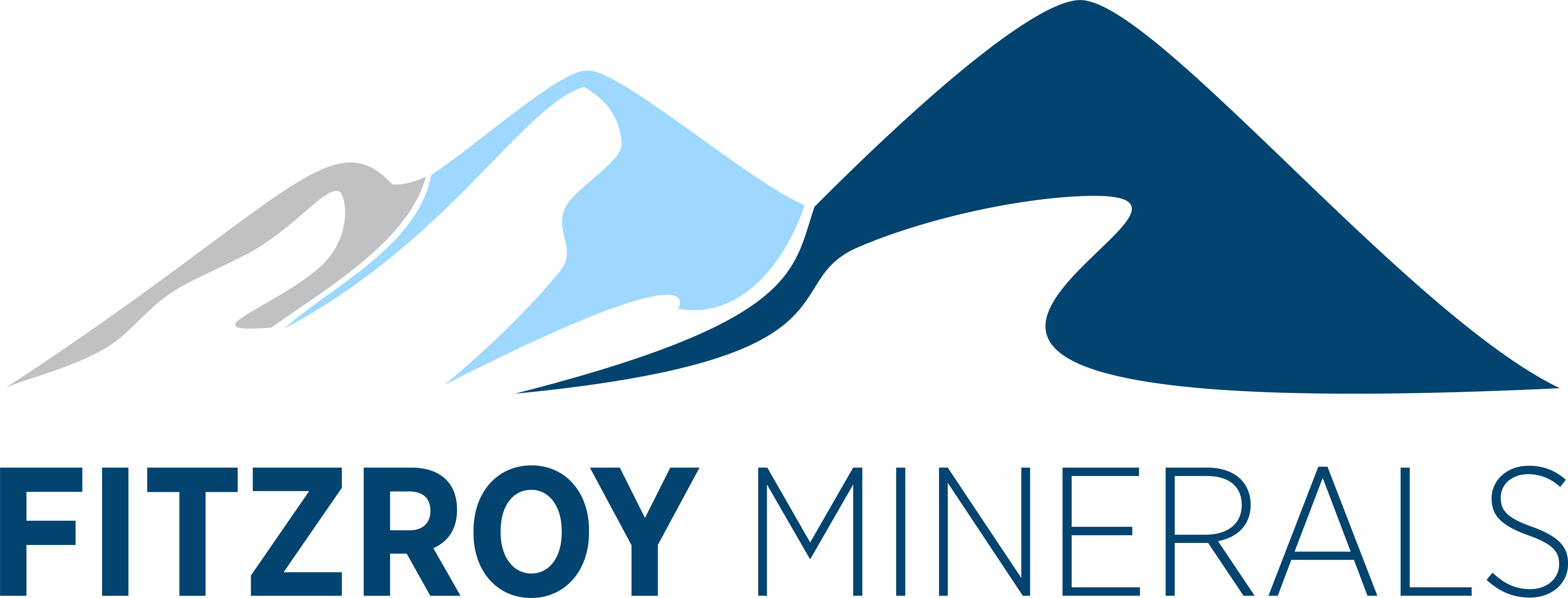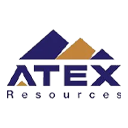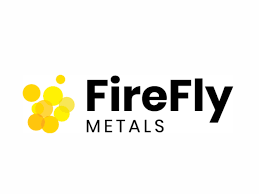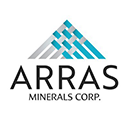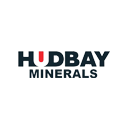Copper Investment Analysis: Macro Trends and Investment Opportunities

Copper faces supply constraints as demand surges from electrification and AI. Major miners show flat production despite billions invested. South American shift creates opportunities.
- Supply Constraints Intensifying: Major copper producers like BHP and Glencore are projecting flat production despite billions in investment, while mine closures in Australia due to high energy costs and permitting challenges create supply bottlenecks
- Structural Demand Growth: Global electrification, AI infrastructure expansion, and 6 billion people aspiring to developed-world lifestyles drive long-term copper demand, with deposits becoming deeper and lower grade
- Geographic Shift to South America: Capital flight from Australia to Argentina and Chile as companies like Glencore and BHP redirect $16+ billion in investments, despite social and permitting risks
- Price Divergence Opportunity: Copper has underperformed gold significantly over 25 years, creating a potential convergence trade as the copper/gold ratio suggests copper is historically cheap in real money terms
- Critical Mineral Status: US designation of copper as a critical mineral signals policy support, though cultural and regulatory barriers to domestic mining remain substantial
Why Copper is the Essential Investment for the Next Decade
Introduction: The Red Metal
Copper sits at the intersection of humanity's greatest challenge and opportunity. As the world accelerates toward electrification and artificial intelligence transforms energy consumption, copper has emerged as the indispensable metal of the 21st century. Yet despite this fundamental shift, copper prices have remained remarkably stable, creating what industry analysts believe is one of the most compelling investment opportunities in commodities today.
The disparity between copper's critical importance and its market performance has created unique investment conditions. While gold has soared to record highs, copper trades at levels that industry experts consider unsustainable given the structural changes reshaping global demand.
Global Demand Transformation: The Electrification Imperative
The copper market is experiencing a fundamental demand transformation driven by three converging forces. First, the global push toward electrification requires unprecedented amounts of copper for everything from electric vehicle charging infrastructure to renewable energy systems. A single electric vehicle contains four times more copper than a conventional car, while offshore wind farms require massive copper installations for both generation and transmission.
Second, the artificial intelligence boom is creating entirely new categories of copper demand. Data centers, the backbone of AI infrastructure, consume enormous amounts of electricity and require extensive copper wiring and cooling systems. As AI capabilities expand, these facilities will multiply globally, each requiring substantial copper installations.
Third, demographic and economic trends continue driving baseline copper demand. With 8 billion people on the planet, 6 billion of whom aspire to the lifestyles of the other two billion people, the fundamental consumption trajectory remains strongly upward. This demographic pressure, combined with general economic development, ensures robust underlying demand growth.
Supply Crisis: The Perfect Storm of Constraints
The copper industry faces unprecedented supply challenges that industry leaders acknowledge will persist for years. Major producers are struggling to maintain current production levels, let alone meet growing demand. BHP's Escondida, despite $10 billion in investment, projects flat production of 0.9 to 1 million tons annually for the next five years, demonstrating how even the world's largest copper mine cannot expand output significantly.
This supply constraint stems from multiple factors. Ore grades are declining as easily accessible, high-grade deposits are exhausted. Mineral deposits are deeper and lower grade, with large companies spending more money just to stand still. The geological reality is that new discoveries require increasingly sophisticated and expensive extraction methods.
Compounding these natural challenges are human-made obstacles. Permitting processes have become extraordinarily complex and time-consuming. The transcript highlights how people naturally don't want change in their living environments, creating a fundamental conflict between people not wanting change and humanity needing development. This dynamic plays out across mining jurisdictions worldwide, significantly extending project development timelines.
Geographic Reallocation: The South American Opportunity
A major shift is occurring in global copper investment patterns, with companies redirecting capital from traditional mining centers to South America. Glencore exemplifies this trend by closing operations in Australia while committing potentially $16 billion to Argentine projects. The company's El Pachon and Agua Rica projects represent nationally important investments that could transform Argentina's mining sector.
Similarly, BHP has abandoned plans to develop nickel-copper assets in Australia, instead focusing on the Filo del Sol Vicuñium District in Argentina. This geographic reallocation reflects both the superior economics of South American deposits and the increasingly challenging regulatory environment in developed markets.
However, this shift brings its own risks. Argentina really does not have a mining culture, so the social side of this thing is going to be really, really tricky. Companies must navigate complex social and political landscapes while developing these world-class resources.
Best Copper Stocks: Analyzing the Investment Landscape
The copper investment universe spans from established major producers to emerging exploration companies, each offering different risk-reward profiles. Major producers like BHP provide steady cash flows and dividends but limited growth potential. Despite massive capital investments, these companies project flat production profiles, suggesting limited upside from volume growth.
Mid-tier producers and development companies offer more compelling growth prospects. Companies advancing projects through feasibility studies, like Marramaca with its recently released definitive feasibility study, demonstrate how projects can rapidly increase in value as they de-risk. The company's market capitalization doubled as it progressed from preliminary to definitive feasibility study.
Junior exploration companies present the highest risk-reward opportunities. Companies like Gladiator Metals, which has discovered copper mineralization across multiple targets in Canada's Yukon territory, offer exposure to potential major discoveries. However, these investments require careful due diligence, as demonstrated by companies like Viscount Mining, which released poorly documented drilling results that raised significant technical concerns.
Major Producers: Cash Flow Kings with Limited Growth
Glencore (Mount Isa & Argentina Projects)
Glencore is winding down parts of its Australian copper chain, including the Mount Isa smelter and Townsville refinery, citing high energy costs, insufficient feed, and limited policy support. Capital is pivoting to Argentina: El Pachón (~0.43% Cu; capex $10B+) and Agua Rica (leveraging Alumbrera infrastructure; capex $5B). Agua Rica’s capital intensity ($145k/t annual capacity) is far lower than El Pachón ($275k/t), reflecting infrastructure reuse. Combined spend could reach ~$16B—nationally significant but dependent on social license, water, and Argentina’s nascent mining culture. Strategic message: exit high-cost legacy downstream, concentrate on long-life Andean copper with better capital efficiency.
BHP (Escondida, Spence, Filo District)
BHP’s 2025 results highlighted strong copper output: Escondida delivered its best production in 17 years, and Spence hit records. Total copper output was 2Mt, with 59% EBITDA margins rivaling iron ore. Despite $10B investment at Escondida, guidance shows flat medium-term production (0.9–1.0Mt). This underscores a paradox: majors can maintain scale but not deliver growth. BHP is shifting capital away from Australian nickel-copper projects toward South America, backing the Filo del Sol/Vicuña district. Copper is central in BHP’s long-term capex plans, but incremental growth remains slow, suggesting structural supply challenges despite ongoing efficiency gains and strong margins from tier-one assets.
Hudbay Minerals (Copper World, USA)
Hudbay’s Copper World project in Arizona has drawn attention after selling 30% for $600M, implying a $1.8B market value. Phase one PFS outlined a $1.1B NPV (8% discount, $3.75/lb copper) and 19% IRR on 92,000 tpa copper output. Capex was estimated at $1.3B plus $400M in year four. Expansion into phase two, which would extend mine life significantly, faces U.S. federal permitting hurdles. The project’s economics highlight both the scale of demand for U.S. copper projects and the persistent permitting bottlenecks. Wheaton Precious Metals has already invested $270M via a streaming deal, underscoring strategic investor confidence in the asset.
Development Stage Companies: The Sweet Spot for Risk-Adjusted Returns
Marimaca Copper (Chile)
Marimaca has released its DFS for the Marimaca Oxide Deposit (MOD), confirming robust economics. Pre-production capex is $587M, with capital intensity ~$11,700/t copper capacity—very competitive. Steady-state production is ~49,000 tpa Cu, deliberately below Chile’s 50,000 tpa royalty threshold. AISC is $2.09–2.29/lb, with a $700M NPV (8% discount, $4.20/lb Cu) and 31% IRR, rising to $1B NPV and 39% IRR at $5.00/lb. Reserves total 179Mt @ 0.4% Cu. With permitting and financing underway, the project is on track for development. Exploration upside exists at Pampa El Médano and other satellite oxides, pointing to a potential regional hub-and-spoke strategy.
Firefly Metals (New Foundland, Canada)
Firefly continues to generate strong exploration results from its brownfield project in New Brunswick. Recent highlights include 26m at 5.3% Cu, part of a multi-year growth drilling campaign. The company has built a ~$500M US market cap (~A$816M) by demonstrating consistent high-grade results near infrastructure, underpinning potential low-cost development. The district has existing mineral endowment and supportive logistics, enhancing economic appeal. Firefly represents a classic brownfield growth story, with high-grade intersections supporting the case for resource expansion and project advancement. Continued drilling success suggests further rerating potential as the company advances its path toward defining development-ready copper assets.
Sandfire Resources America (USA)
Sandfire Resources’ North American arm has reported robust copper results, including 15m at 8% Cu. However, the investment case is complicated by corporate structure and integration with parent Sandfire Resources. Questions remain whether this is a standalone value driver or subsidiary asset with strategic optionality. Market traction exists given high-grade intersections, but clarity around ultimate development strategy and capital allocation is lacking. Investors must assess the likelihood of Sandfire prioritizing these assets relative to its global portfolio, including DeGrussa and Motheo. While high grades are promising, commercial viability will depend on scalability, permitting, and corporate commitment to U.S. projects.
ATEX Resources (Valeriano, Chile)
ATEX has steadily advanced its Valeriano copper-gold porphyry in Chile, with continued strong drill results. Market cap sits around $450–500M, reflecting growing confidence in a district-scale asset. The company has delivered thick mineralized intercepts supporting a large tonnage resource with significant upside. Investor interest has been reinforced by a clear trajectory of results, pushing the share price higher. While still pre-development, Valeriano is one of the better-positioned copper juniors in Chile, offering scale, location advantages, and potential strategic appeal to majors. The company’s steady delivery of value-adding drill results makes it one of the standout Canadian-listed copper explorers.
Osisko Metals / Osisko Development (Canada)
Osisko recently acquired a large, low-grade copper project and has begun drilling aggressively, building momentum. Although details require scrutiny—particularly around metallurgy and economics—the company has demonstrated a consistent trajectory of positive news flow. Market support reflects confidence in management’s ability to unlock value from district-scale assets, building on Osisko’s track record in precious metals. While the acquired asset may be viewed as a “retread,” ongoing exploration is yielding encouraging results. Investors should monitor metallurgical complexity and scale requirements. Nonetheless, Osisko’s backing and capital access position it well to continue advancing the project and crystallizing long-term copper value.
Exploration Companies: High Risk, High Reward Discovery Plays
Fitzroy Minerals (Chile)
Fitzroy is advancing the Buen Retiro project near Copiapó, Chile, with an 8,000m Phase 2 drill program. Results include 119m @ 0.53% Cu in oxides and strong continuity across ~1km strike, potentially extending to 1.4km. This sbuilds on the previously annouced 110m @1.98% Cu, including 58m @ 3.06% Cu. Oxide mineralization is near-surface, with grades above 0.5%, attractive for heap leach. Fitzroy benefits from infrastructure—proximity to highway, power, mining services, and no nearby residents. Importantly, partner Pucobre owns a hungry SX-EW plant 90km away, offering potential to avoid ~$40M of capex by toll-treating ore. Market cap is ~$68M, and the strategy is early production from oxides, while continuing to explore deeper sulfides.
Gladiator Metals (Yukon, Canada)
Gladiator Metals is making significant progress in the Yukon, with multiple high-grade intercepts across its Hat, Cowley Park, and Arctic Chief targets. Recent results include 77m at 1.7% Cu, 14m at 8% Cu + 2 g/t Au, and numerous 50–100m intercepts above 1% Cu. Market cap is ~$76M, reflecting early-stage growth potential. The company controls a large, underexplored district with historical production and multiple untested skarn targets. While grades are excellent, permitting in the Yukon poses risks given First Nations sensitivities and recent environmental controversies. Nonetheless, Gladiator stands out among juniors for its geological potential and strong momentum.
Viscount Mining (Colorado, USA)
Viscount announced a “pivotal” deep copper-gold discovery at Silver Cliff, Colorado: 844m @ 0.214% CuEq, with higher-grade zones like 189m @ 0.326% CuEq. However, disclosures raised major red flags. Key issues included missing “from-to” assay data, poor QA/QC, and unassayed upper 300m of core despite visual sulfide mineralization. Investor materials were poorly structured, with reliance on ranked sample highlights rather than standardized reporting. These deficiencies suggest limited geological oversight and lack of NI 43-101 compliance discipline. Market enthusiasm has lifted the share price, but credibility risks are severe. Without improved disclosure and controls, Viscount appears speculative at best.
Arras Minerals (Kazakhstan)
Arras Minerals reported long mineralized intercepts at its Berezski anomaly, including 440m at 0.16% Cu and 0.25 g/t Au. While the grades are marginal, results confirm a large mineralized system with strike potential. Market cap is ~$99M, and the company pursues a portfolio strategy across Kazakhstan, an emerging mining jurisdiction. Challenges include grade economics and the difficulty of advancing sub-0.2% Cu projects. Nonetheless, the scale and district footprint could deliver upside if higher-grade zones are delineated. Arras exemplifies the high-risk, high-reward exploration approach—big systems, modest grades, potential for re-rating if better intercepts emerge across its expansive land package.
Copper Investment Strategies: Navigating Market Dynamics
The current copper market environment requires sophisticated investment strategies that account for both cyclical timing and structural changes reshaping the industry. Successful copper investing demands understanding the interplay between macroeconomic cycles, supply chain dynamics, and technological disruption driving long-term demand growth.
Core-Satellite Portfolio Approach
The most effective copper investment strategy employs a core-satellite structure that balances stability with growth potential. The core allocation (50-60% of copper exposure) should focus on established producers with strong balance sheets, consistent cash generation, and diversified asset portfolios. Companies like BHP and Glencore provide steady dividend yields while offering exposure to copper price appreciation without significant execution risk. These positions serve as portfolio anchors during volatile market conditions while participating in long-term copper appreciation.
Satellite positions (40-50% of exposure) should target higher-growth opportunities across the development spectrum. This includes 20-30% allocation to development-stage companies advancing feasibility studies and 10-20% to quality exploration plays with discovery potential. The satellite approach allows investors to capture the substantial returns available from successful project advancement while maintaining overall portfolio stability through core holdings.
Sector Rotation & Cycle Management
Copper's cyclical nature creates opportunities for tactical allocation adjustments based on economic cycles and market sentiment. During economic expansion phases, junior exploration and development companies typically outperform as investors embrace higher-risk growth stories. Conversely, during economic uncertainty or copper price weakness, major producers with strong balance sheets and dividend sustainability offer relative safety.
Smart sector rotation involves monitoring leading economic indicators, inventory levels, and demand signals from key consuming sectors. Chinese economic data, European manufacturing PMIs, and US construction activity provide early signals for copper demand trends. Similarly, monitoring London Metal Exchange inventory levels and treatment charges offers insight into supply-demand balance dynamics.
The current environment suggests accumulating positions during economic uncertainty while copper prices remain range-bound. Historical analysis indicates that copper investments made during periods of economic pessimism often generate superior long-term returns as markets fail to anticipate the magnitude of subsequent demand recovery.
Jurisdictional Diversification
Modern copper investment strategies must account for increasing geopolitical risks and jurisdictional challenges affecting mining operations. The industry's geographic reallocation toward South America creates both opportunities and risks requiring careful portfolio balance.
Investors should maintain exposure across multiple jurisdictions to mitigate country-specific risks. While South American projects offer superior economics and resource quality, they introduce political and social risks that developed market operations typically avoid. Balanced portfolios might include 40-50% exposure to established mining jurisdictions (Australia, Canada, Chile), 30-40% to emerging opportunities (Argentina, Peru, Kazakhstan), and 10-20% to frontier markets with exceptional resource potential.
This geographic diversification extends beyond country risk to include currency exposure, regulatory frameworks, and infrastructure quality. Companies operating across multiple jurisdictions provide natural hedging against jurisdiction-specific challenges while maintaining exposure to the best global opportunities.
Technology Integration
Environmental, social, and governance considerations increasingly influence copper investment success, particularly as institutional capital demands sustainable mining practices. Companies demonstrating strong ESG credentials often command valuation premiums while avoiding regulatory and social risks that can derail project development.
Technology adoption represents another critical investment consideration, as companies leveraging automation, data analytics, and advanced processing techniques achieve superior operational performance. Organizations investing in digital transformation and sustainable mining practices position themselves advantageously for long-term success in an industry facing increasing scrutiny.
Options & Derivatives Strategies
Sophisticated investors can enhance copper exposure through options and derivatives strategies that provide leveraged exposure or downside protection. Call options on copper ETFs or mining stocks offer leveraged upside participation during price rallies while limiting downside risk to premium paid. Conversely, protective puts on core holdings provide downside protection during market volatility.
Copper futures and ETF options markets provide additional tactical opportunities for experienced traders. Volatility strategies around earnings announcements, economic data releases, or geopolitical events can generate additional alpha for active portfolio managers.
Market Timing and Price Dynamics
Understanding copper's complex price dynamics requires analyzing both short-term technical factors and long-term structural trends that drive sustainable price appreciation. Current market conditions suggest an attractive entry point for long-term investors, though timing considerations remain important for optimizing returns.
Technical Analysis & Chart Patterns
Copper's 25-year price chart reveals important technical patterns that inform investment timing decisions. The metal has traded in a relatively narrow range over the past six months despite significant fundamental developments, suggesting compressed volatility that often precedes major directional moves. The Trump tariff volatility in April created temporary arbitrage opportunities between LME and COMEX prices, but these have since normalized, indicating market efficiency.
The copper-to-gold ratio presents one of the most compelling technical signals for copper investment timing. This ratio has reached historically low levels, indicating copper appears cheap relative to gold in real money terms. Over 25 years, this ratio has trended downward as copper has gotten cheaper in real money terms, a trend that appears unsustainable given increasing production costs and structural demand growth.
Chart analysis suggests copper is forming a multi-year base pattern around current levels, with potential for significant upside as supply-demand fundamentals tighten. The lack of meaningful price movement despite positive fundamental developments indicates the market may be underestimating the magnitude of coming supply shortages.
Fundamental Valuation Metrics
Traditional commodity valuation metrics suggest copper remains attractively valued despite recent supply constraint recognition. Copper prices need to rise substantially to incentivize new mine development, as current prices barely cover all-in sustaining costs for many operations. The industry's flat production guidance despite massive capital investments indicates current prices are insufficient to generate meaningful supply responses.
Cost curve analysis reveals that copper prices must rise significantly to bring the highest-cost production online. With demand growth accelerating and supply constrained, prices will need to ration demand or incentivize new supply development. This fundamental imbalance suggests current prices are unsustainably low from a long-term perspective.
Macroeconomic Timing Factors
Copper's sensitivity to macroeconomic conditions creates timing opportunities around economic cycles and policy changes. The current environment presents several favorable timing factors: central bank monetary policy remains accommodative, infrastructure spending globally continues expanding, and energy transition policies drive structural demand growth.
Chinese economic policy represents the most important macroeconomic timing factor for copper prices. China consumes approximately 50% of global copper production, making Chinese economic health critical for copper demand. Current Chinese economic conditions suggest potential policy stimulus that could drive copper consumption higher.
Global inflation dynamics also influence copper investment timing. As central banks combat inflation through interest rate policy, industrial commodities like copper often benefit from currency debasement and real asset demand. The current inflationary environment suggests potential tailwinds for copper prices as investors seek inflation hedges.
Seasonal & Cyclical Patterns
Copper exhibits predictable seasonal patterns that inform tactical timing decisions. Spring typically sees increased construction activity and manufacturing expansion, driving seasonal demand increases. Conversely, winter months often see demand moderation in temperature-sensitive applications.
Longer-term cyclical patterns suggest copper may be entering a new supercycle driven by electrification and energy transition demands. Previous copper supercycles typically lasted 15-20 years, with the last cycle ending around 2011. If historical patterns repeat, copper may be beginning a new extended period of higher prices driven by structural demand growth.
Regulatory & Policy Tailwinds
Government recognition of copper's strategic importance is creating unprecedented policy support for the industry, though implementation remains challenging and timeline-dependent. These regulatory developments represent important investment considerations that could materially impact returns across the copper value chain.
Critical Mineral Designation & Strategic Stockpiling
The United States' proposal to add copper to its critical minerals list represents a watershed moment for policy recognition of copper's essential role in national security and economic competitiveness. This designation typically triggers several supportive policies including streamlined permitting processes, tax incentives for domestic production, and potential government stockpiling programs.
Critical mineral status often leads to strategic stockpile establishment, creating additional government demand that supports price floors during economic downturns. Historical precedent with other strategic minerals suggests government stockpiling can provide meaningful demand support during market development phases.
However, implementation of critical mineral policies typically requires years to materialize into tangible benefits. The complex legislative and regulatory framework requires "root and branch shift in culture" to enable meaningful change. Investors should view critical mineral designation as a long-term positive while recognizing near-term impacts remain limited.
Infrastructure & Clean Energy Policy Support
Global infrastructure spending and clean energy transition policies provide unprecedented demand tailwinds for copper consumption. The US Infrastructure Investment and Jobs Act, European Green Deal, and similar programs worldwide mandate massive copper installations for grid modernization, electric vehicle charging networks, and renewable energy systems.
These policy commitments represent multi-decade demand growth that appears largely independent of traditional economic cycles. Government spending on infrastructure and clean energy typically continues during economic downturns, providing demand stability that supports copper prices during challenging periods.
Clean energy policy specifically drives copper demand intensity increases across the economy. Wind and solar installations require 3-4 times more copper per megawatt than traditional power generation, while electric vehicle adoption replaces low-copper internal combustion vehicles with high-copper electric alternatives.
Mining Policy
Recognition of domestic mining's strategic importance is slowly driving permitting reform discussions across developed economies. The contradiction between clean energy goals and mining restrictions is becoming politically untenable, creating pressure for more balanced regulatory approaches.
However, permitting reform faces significant cultural and political obstacles. Environmental groups oppose mining expansion regardless of strategic necessity, while local communities resist change regardless of national benefits. This fundamental conflict between local opposition and national needs creates persistent regulatory uncertainty. Progressive jurisdiction shopping becomes increasingly important as companies seek permitting-friendly locations for new development. Countries offering streamlined approval processes while maintaining environmental standards attract increasing investment flows, creating competitive advantages for forward-thinking jurisdictions.
Copper Supply Chain Security
Growing recognition of copper supply chain vulnerabilities is driving trade policy changes that support domestic production and processing. China's dominance in copper refining creates strategic dependencies that policymakers increasingly view as unacceptable. Trade policies supporting domestic copper processing and manufacturing could create additional demand for North American and European copper production. Reshoring initiatives driven by supply chain security concerns support premium pricing for copper produced in allied countries.
However, trade protection measures can create unintended consequences including higher input costs for domestic manufacturers. Balancing supply chain security with economic efficiency requires sophisticated policy design that may take years to implement effectively.
Risk Assessment
Copper investment success requires systematic risk assessment and mitigation strategies that address both systematic and company-specific risks affecting returns across different market environments and investment timeframes.
Commodity Price Volatility Management
Commodity price volatility represents the primary systematic risk affecting all copper investments, requiring sophisticated hedging and diversification strategies. Copper prices can decline 30-50% during economic downturns while surging similar amounts during supply disruptions or demand surges.
Portfolio construction should account for copper's cyclical nature through position sizing and diversification across development stages. Overweighting established producers during volatile periods provides stability, while maintaining growth exposure through development and exploration companies captures upside during favorable environments.
Options strategies can provide additional downside protection for significant copper positions. Protective puts on core holdings or portfolio hedging through inverse ETFs offers insurance against major price declines. However, hedging costs must be balanced against potential protection benefits, as persistent hedging can materially reduce long-term returns.
Execution Risk Assessment
Mining operations face numerous execution risks that can materially impact investment returns, requiring careful due diligence and ongoing monitoring. Technical risks include resource estimation accuracy, metallurgical processing challenges, and geotechnical stability issues that can cause production disruptions or cost overruns.
Management quality represents perhaps the most critical risk factor in mining investments. Strong technical teams with proven track records typically execute projects more successfully than inexperienced management groups. Evaluating management includes assessing previous project delivery, financial stewardship, and stakeholder relationship management.
Financial risk assessment requires analyzing debt levels, liquidity positions, and funding requirements for ongoing operations and development projects. High debt levels create refinancing risks during market downturns, while inadequate liquidity can force distressed asset sales or unfavorable equity financing.
Jurisdictional Risk Analysis
Geopolitical risks are increasing as copper resources become more strategically important and politically sensitive. Resource nationalism, expropriation threats, and adverse regulatory changes can eliminate investment value overnight, requiring careful jurisdiction selection and risk monitoring.
Political stability analysis should consider both current government policies and opposition party positions regarding mining development. Elections can result in dramatic policy reversals that materially affect project economics. Long-term political trends regarding environmental regulation, indigenous rights, and resource extraction provide insight into future operating environments.
Currency risk represents an additional consideration for international copper investments. Most copper operations sell in US dollars while incurring local currency costs, creating natural hedging. However, extreme currency movements can affect project economics and financial returns for international investors.
Environmental, Social, and Governance Risk Management
ESG risks increasingly influence copper investment success as institutional investors demand sustainable mining practices and regulators impose stricter environmental requirements. Environmental risks include water usage, tailings management, and air quality issues that can result in operational restrictions or closure orders.
Social license to operate has become critical for mining project success, particularly in developed countries with strong environmental movements. Community opposition can delay or prevent project development regardless of economic merits. Companies with strong community engagement and benefit-sharing programs typically face fewer social challenges.
Governance risks include board independence, executive compensation, and financial transparency issues that can indicate management problems or ethical concerns. Strong governance practices typically correlate with superior operational performance and lower regulatory risk.
The Investment Thesis for Copper
- Accumulate Major Producers at Current Valuations: Companies like BHP and Glencore trade at attractive multiples despite strong cash generation and provide stable exposure to copper price appreciation
- Target Mid-Cap Development Companies: Focus on companies advancing feasibility-stage projects in stable jurisdictions, as these offer the best risk-adjusted returns as projects move toward production
- Diversify into Junior Explorers with Strong Technical Teams: Allocate 10-15% of copper exposure to well-managed exploration companies in prospective geological settings, particularly in Canada and South America
- Consider Copper ETFs for Core Exposure: Physical copper ETFs provide direct commodity exposure without company-specific risks, suitable for 30-40% of total copper allocation
- Monitor Supply Disruptions for Trading Opportunities: Temporary supply disruptions often create short-term price spikes that can be exploited through options or leveraged positions
- Time Entry Points Around Economic Data: Copper prices often react strongly to economic indicators; accumulate positions during economic uncertainty when prices may be temporarily depressed
The copper market stands at an inflection point where structural demand growth collides with increasingly constrained supply. This fundamental imbalance creates compelling investment opportunities across the copper value chain, from established producers to early-stage explorers. The geographic shift of investment toward South America, combined with policy recognition of copper's critical importance, supports the thesis for sustained higher copper prices. Investors should consider copper exposure as an essential component of portfolios positioned for the global electrification and AI infrastructure buildout, while carefully managing the inherent risks through diversification and careful company selection.
TL;DR
Copper stands at a critical inflection point where surging demand from electrification, AI infrastructure, and demographic growth meets severe supply constraints that even major producers cannot overcome. Despite $10+ billion investments, industry leaders like BHP project flat production for the next five years, while companies flee Australia's hostile regulatory environment for South America's superior resources, redirecting $16+ billion in capital.
The investment opportunity spans multiple risk levels: established producers like BHP and Glencore offer stable cash flows and dividend yields while providing copper price exposure; development companies like Marimaca Copper demonstrate how systematic de-risking can double valuations; exploration plays like Gladiator Metals & Fitzroy Minerals offer discovery upside in proven geological terrains.
Copper's historically cheap valuation relative to gold, combined with critical mineral policy support and structural demand drivers, creates a multi-year investment thesis. The sector rewards diversified approaches across the development spectrum, with timing favoring accumulation during current range-bound pricing before supply-demand fundamentals drive meaningful price appreciation.
Frequently Asked Questions (AI-Generated)
1. What makes copper a better investment than other commodities right now? Copper benefits from unique structural demand drivers including electrification, AI infrastructure, and demographic growth, while facing severe supply constraints that other commodities don't experience to the same degree.
2. Which copper companies offer the best risk-adjusted returns? Mid-cap development companies advancing feasibility-stage projects typically offer the best risk-adjusted returns, balancing growth potential with reduced technical risk compared to early-stage explorers.
3. How should investors allocate between copper producers and explorers? A balanced approach might include 50-60% in established producers, 25-35% in development-stage companies, and 10-15% in quality exploration plays, adjusted based on risk tolerance.
4. What are the main risks in copper investing? Primary risks include commodity price volatility, regulatory and permitting delays, geopolitical instability in key mining regions, and execution risk in developing new mines.
5. How do economic cycles affect copper investments? Copper is cyclical but benefits from long-term structural demand growth. Economic downturns can create attractive entry points, while growth periods typically drive strong performance across the sector.
These FAQs are AI-generated based on common investor inquiries about commodity investments.
Analyst's Notes




Subscribe to Our Channel
Stay Informed










